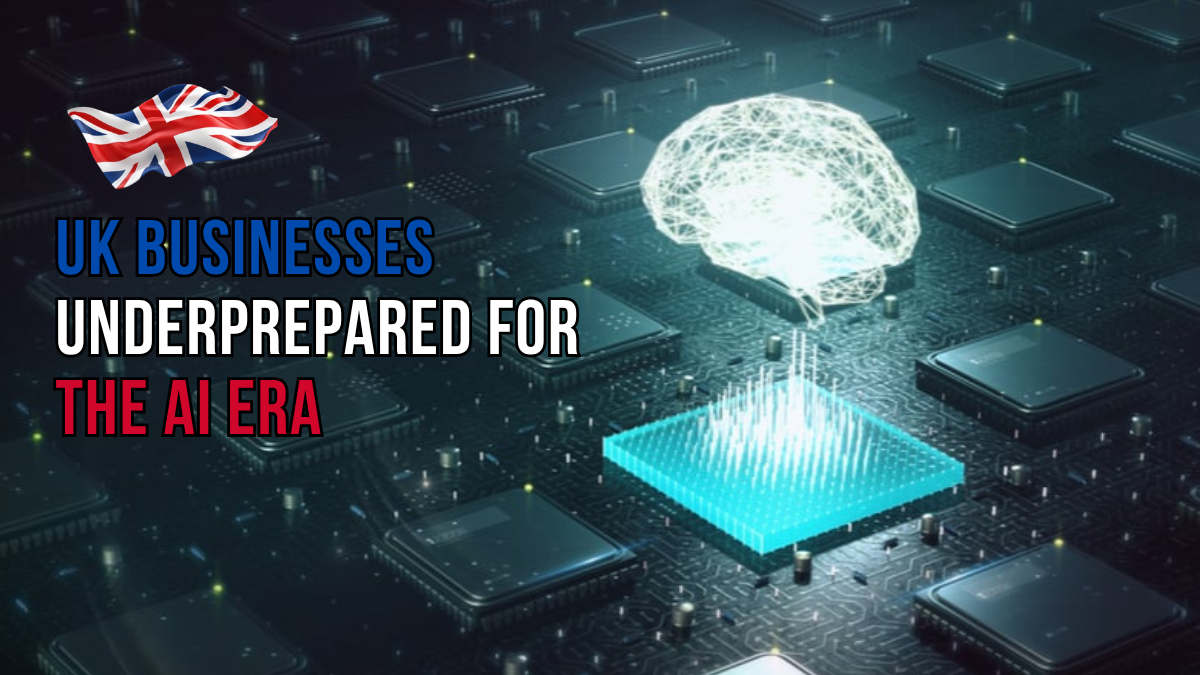With artificial intelligence promising to reshape the world of commerce, the UK has rapidly adopted AI across industries. Yet, recent research paints a worrying picture for many businesses. While enterprises acknowledge AI’s potential, a significant number are unprepared for the cybersecurity challenges it brings. This blog dives into the realities of AI adoption, its risks, and what businesses can do to protect themselves.

An AI-Driven Economy, But At What Cost?
The UK is at the forefront of the AI revolution in Europe, boasting a market valued at over £72 billion. With nearly 95% of businesses either using or exploring AI, the benefits are evident. AI promises innovation, efficiency gains, and a potential £550 billion boost to GDP by 2035.
But beneath the surface lies a critical concern. A recent CyXcel study revealed that 31% of UK businesses lack AI governance policies, and 29% have only recently established their first AI risk strategy. This reactive approach to AI adoption raises the stakes, leaving businesses vulnerable to advanced cyber threats and operational disruptions.
The Catch-22 of AI
Megha Kumar, the Chief Product Officer at CyXcel, aptly described it as a “catch-22.” Companies are excited to leverage AI’s potential but hesitate due to concerns about its associated risks. And for many, the hesitance translates to inaction, with policies playing catch-up after threats have already materialized.
The Rise of AI-Specific Threats
Unlike traditional cybersecurity threats, AI vulnerabilities are unique and often more complex. Here are some emerging challenges that businesses need to address:
1. AI Data Poisoning
AI and machine learning models depend on high-quality, accurate data to function. Data poisoning corrupts the datasets used to train these models, which may:
- Introduce Bias: Make models act in unpredictable or discriminatory ways.
- Open Backdoors: Allow attackers to bypass fraud detection in finance systems.
CyXcel research found nearly 18% of businesses are unprepared for this type of attack.
2. Deepfakes and Cloning
Deepfake technology enables attackers to create hyper-realistic fake videos or audio clips. Imagine a CEO impersonated to greenlight fund transfers, which has already happened in real-world cases. Despite the risks, 16% of businesses have no policies in place to combat such incidents.
3. Exploited Vulnerabilities in AI Models
AI tools can inadvertently amplify specific vulnerabilities, making it easier for hackers to exploit gaps within models, networks, or endpoints.
The implications of these threats go beyond immediate disruptions. Data losses, brand reputation damage, legal penalties, and customer mistrust can bring long-lasting business repercussions.
How Businesses Can Protect Themselves
A robust AI governance framework is no longer optional. It’s a necessity. The UK government’s National Cyber Security Centre (NCSC) stresses the importance of being “Secure by Design” and has laid out key guidelines for safeguarding AI systems.
1. Embed Security from the Start
AI risks should be addressed throughout the entire lifecycle:
- Development: Ensure datasets are clean, robust, and diverse.
- Deployment: Minimize vulnerabilities in live environments.
- Maintenance: Perform regular audits to monitor potential risks.
2. Risk Assessments and Monitoring
Ongoing evaluations are essential. Use techniques like penetration testing or automated surveillance systems designed to detect anomalies in how AI models behave.
3. Training and Awareness
Your human workforce is just as important as your AI systems. Equip employees with cybersecurity training, especially regarding emerging threats like phishing or deepfake scams.
4. Adopt Comprehensive Governance Systems
Implement AI risk management tools, such as CyXcel’s Digital Risk Management (DRM) platform, which combines technical, legal, and strategic expertise. The platform offers businesses insights into threats while providing governance strategies targeted to specific industries.
Why Ignoring AI Risks Is Not an Option
For enterprises investing heavily in AI, neglecting governance comes with severe consequences:
- Financial Losses: Data breaches or business fraud due to AI exploitation can result in losses amounting to millions, especially for financial institutions.
- Regulatory Penalties: Laws like GDPR and upcoming AI-specific regulations aim to hold businesses accountable for the proper handling of AI data and systems. Non-compliance could mean hefty fines.
- Reputation Damage: Customers are increasingly aware of data privacy. Mishandling AI-related security issues can lead to a loss of trust and long-term brand harm.
The Path Forward for UK Businesses
UK enterprises must move beyond viewing AI governance as a mere checkbox compliance task. Proactive, robust protection strategies—from deepfake countermeasures to building secure algorithms—are essential for long-term success.
Adopting AI systems brings unmatched opportunities, but doing so without proper safeguards can turn innovation into liability. For businesses striving to remain competitive in the AI era, now is the time to ensure that governance policies and cybersecurity defenses match the speed of technological advancement.
FAQs: Frequently Asked Questions
Q1: What are the main risks associated with AI in businesses?
A1: Some primary risks include data poisoning, where malicious actors tamper with the datasets used to train AI systems, and deepfakes, which can be used for misinformation or fraud. Other risks involve algorithmic bias, lack of transparency, and cybersecurity vulnerabilities.
Q2: Why is AI governance important for businesses?
A2: AI governance ensures that businesses are implementing AI technologies responsibly, ethically, and securely. It includes creating policies and frameworks to mitigate risks, ensure compliance with regulations, and foster trust with customers and stakeholders.
Q3: How can businesses protect themselves from AI-related risks?
A3: Businesses can protect themselves by implementing strong cybersecurity measures, regularly auditing AI systems for vulnerabilities, developing clear governance policies, and staying informed about emerging AI threats and regulatory standards.
Q4: What industries are most at risk from AI threats?
A4: Industries that rely heavily on AI, such as finance, healthcare, and technology, are particularly vulnerable. However, as AI adoption grows, businesses across all sectors should be vigilant and proactive in addressing potential risks.
Q5: How can companies detect deepfakes?
A5: Companies can use AI-powered detection tools, monitor inconsistencies in visual or audio content, and invest in employee training to identify potential deepfakes. Staying informed about the latest advancements in deepfake technology is also essential.
click HERE for more
